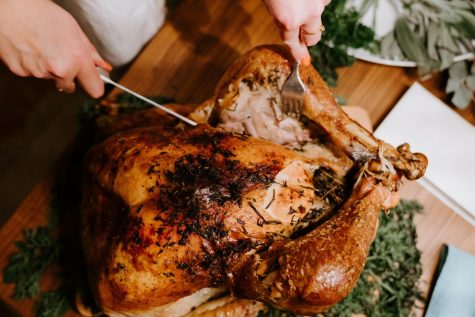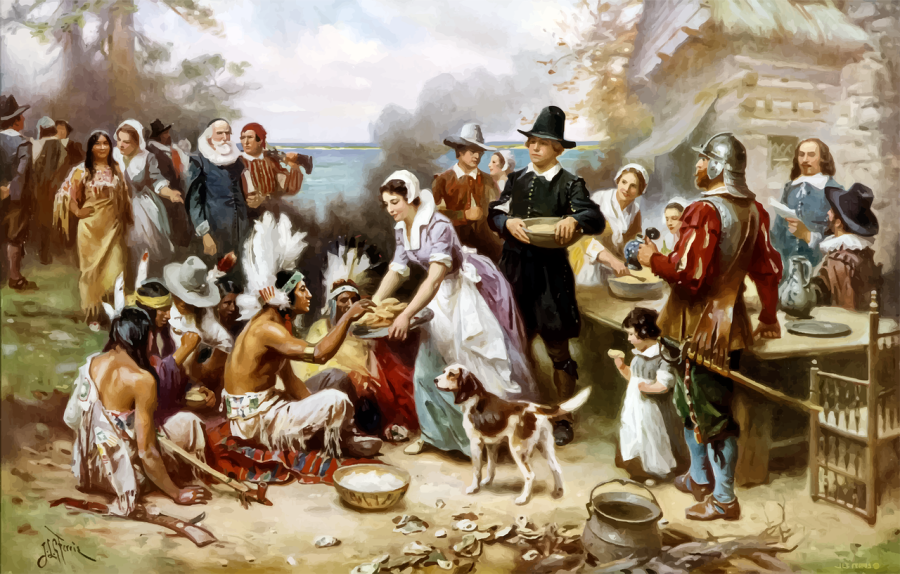The Evolution of Thanksgiving Tradition
Many holidays, including Thanksgiving has changed overtime. The meaning and way we celebrate continue to be influenced.
Turkey. Yams. Ham. Pumpkin pie. Thanksgiving is one of the most popular national holidays in the United States. Celebrated on the fourth of every November and represented by a turkey, families tend to gather together to give thanks and feast upon a large dinner. As a major holiday in the United States, many schools and businesses close on Thanksgiving Day. Many people follow their family’s Thanksgiving tradition. However, the way Thanksgiving is celebrated differs due to cultural background along with generation. The view on United States holidays continue to change as society evolves.

It is believed and taught in public schools that the first Thanksgiving dates back in 1621. Inhabiting what is now called ‘Rhode Island,’ the Wampanoag shared an autumn harvest fest with Plymouth colonists- the Puritans. As fall comes to an end, the temperature begins to decrease, and the weather harshens. With the season transitioning into Winter, the scarcity of food increases. To increase survival, these two groups of native and colonist had already joined together with plans to assist each other. It is believed that this led to the first celebration of Thanksgiving. In 1621, both the English and the people of the Wampanoag tribe gathered food such as deer, corn, and even shellfish, for three days. Amazingly, Turkey was not an original dish. After acquiring the necessary food, a large feast was shared with the community. Although 1621 is known as the first Thanksgiving, National Geographic notes that the first religion-based Thanksgiving was not recorded until 1623. Thanksgiving did not become a national holiday until two decades later, in 1863 with President Abraham Lincoln’s Thanksgiving Proclamation.

Over time, people quickly began to correlate Thanksgiving Day with food. American families of all sizes, whether big or small, tend to spend time in the kitchen of their homes for Thanksgiving. The most popular dish served on this holiday is a turkey. Although turkey was not served in the original autumn feast, the turkey had become an important symbolic representation of Thanksgiving. Native to North America, a turkey represents success, which is otherwise known as prosperity.
With the diversity of cultural backgrounds in the United States, celebration ways and perspectives differ from individual. Although Thanksgiving is a national holiday, there is not a single right way, expectation, or tradition to participate in this holiday. For example, the food served differs based on the household. While some people choose to eat out at an available restaurant, most families prefer to cook a home cooked meal. In my household, the favored protein of Thanksgiving isn’t turkey, instead it is a juicier meat- ham. For my family, you can’t have a Thanksgiving feast without ham, macaroni and cheese, yams, and even some favored southern dishes. With there being no formal rule to how to cook a proper Thanksgiving Day dinner, most families tend to serve their favorite homecooked meals. For example, with the growth vegans, there are many Thanksgiving dinners that lack turkey, or any other meat. As cultural already plays a large role in what’s being served, people originating from another country may present foods native to their home country.

Although most families celebrate Thanksgiving, some families frown upon this national holiday. In fact, Generation Z has been using social media to spread awareness about the historic truth of the past Thanksgiving feasts. According to the National Day Calendar, Thanksgiving Day is also considered “the day of mourning.” The goal is to reflect on Native American ancestry, while respecting the lives and culture lost during colonization.


